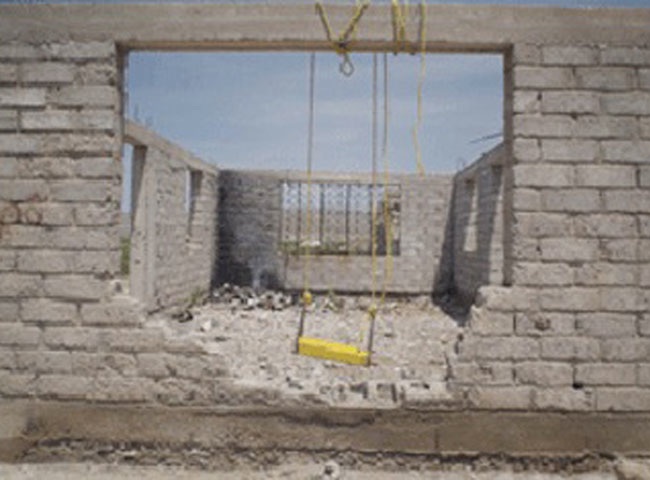Fronterismo
-
Réalisé par Sofie Benoot • Écrit par Sofie Benoot
-
Belgique • 2007 • 43 minutes • Vidéo • Couleur
- Réalisation :
Sofie Benoot - Écriture :
Sofie Benoot - Son :
Senjan Jansen - Montage :
Sofie Benoot, Nico Leunen
- Production (structure) :
Sofie Benoot - Ayant droit :
Sofie Benoot
- N° ISAN :
non renseigné
Résumé
"La fin du Pèlerin confrontait Chaplin, évadé de Sing Sing, à un choix redoutable : passer la frontière du Mexique et recouvrer la liberté, mais perdre la femme aimée, ou rester au Texas près de son amour, et retourner au pénitencier. La peur de l’inconnu comme de la prison l’amenait à ne pas choisir et à longer la frontière mexicaine, un pas dans la liberté, un pas dans la prison, un pied de chaque côté d’une ligne invisible et d’autant plus absurde. Soixante-quinze ans après, l’absurdité administrative d’une frontière séparant en deux un territoire identique des deux côtés demeure. Elle s’est même renforcée. La clôture de la frontière entre le Mexique et les États-Unis est pour les autochtones, nantis ou misérables, une aberration, source d’un grave désordre socio-économique et d’une insécurité croissante. Cette frontière n’est pas pour eux une séparation, mais une identité.
Fronterismo est une suite de portraits de frontaliers, typés et très différents les uns des autres, du cow-boy au peone et à la couturière.
À chaque portrait correspond un aspect de la frontière : une ville divisée en deux où l’on aurait bien du mal à la situer, une voie de chemin de fer, une plaine aride, des falaises abruptes, les gorges du Rio Grande, une bourgade fantôme, une ligne de barbelés et de grillages couvrant l’écran...
Des plans larges, amples, d’où ressortent la somptuosité et la diversité d’un paysage, la richesse et la complexité géologiques d’un territoire irréductible à la notion administrative de frontière. Filmer la frontière, ce n’est pas filmer une ligne de démarcation, un trait abstrait, mais un espace qui est d’abord un lieu de passage, c’est-à-dire un ensemble de ramifications, de liens entre une terre et les êtres." (Yann Lardeau)
At the end of The Pilgrim, Chaplin, escaped from Sing Sing prison, is faced with a formidable choice: either cross the Mexican border thus regaining his freedom but losing the woman he loves, or stay in Texas near his loved one and return to the penitentiary. Fear of the unknown, like that of prison, prevents him from making a choice. He walks along the Mexican border, one foot in freedom, the other in prison, one foot on either side of a line that is invisible and thus all the more absurd. Seventy-five years on, the administrative absurdity of a border dividing a territory identical on each side still remains. It has even been reinforced. For the locals, rich or poor, the closure of the Mexican-USA border is an aberration, leading to serious socio-economic disorder and growing insecurity. For them, the border is not a separation but an identity.
Fronterismo is a series of portraits of border folk, each with a typical look and very different from one another, from the cowboy to the peone and the dressmaker. Each portrait reflects an aspect of the border: a town split in two that would be hard to locate, a rail track, sheer cliffs, the Rio Grande gorges, a ghost town, a line of barbed wire and fencing filling up the screen...
Ample shots reveal the landscape’s impressiveness and diversity, the geological wealth and complexity of a territory that cannot be reduced to an administrative concept of ‘border’. Filming the border is not filming a dividing or abstract line, but a space that is first and foremost a crossing place, a myriad of ramifications and links between a land and human beings. (Yann Lardeau)
Mot(s)-clé(s) thématique(s)
Sélections et distinctions
- 2008 • Cinéma du réel • Paris (France) • Compétition Internationale
Comment avoir accès au film ?
-
Édition DVD
- Il n'existe pas d'édition DVD à notre connaissance
-
Accès VOD
- Il n'existe pas d'accès en VOD à notre connaissance
- Distribution
- Aide sur les moyens d'accéder à un film
